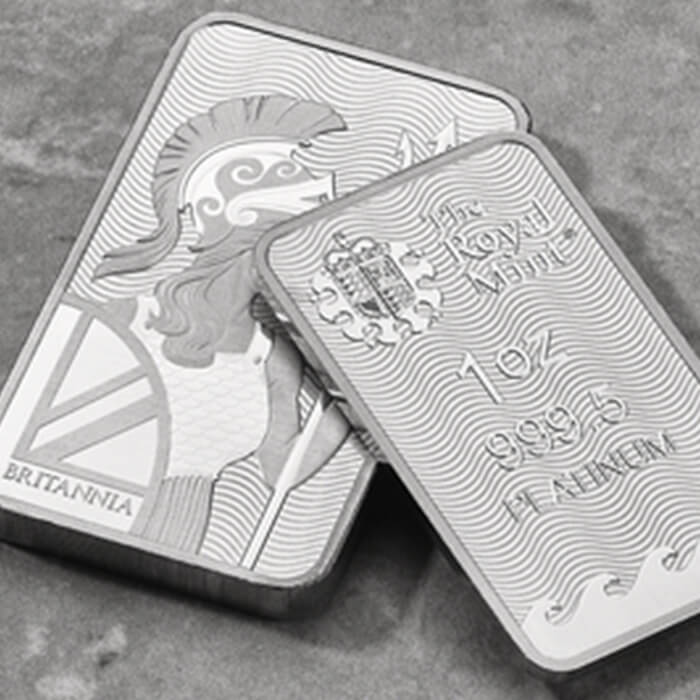
January
2022 opened with the gold price sitting firmly above the $1,800 per troy ounce barrier, even reaching a high of nearly $1,850 in PM trading by the end of the third week of January. Silver opened 2022 at $22.89 an ounce and fell just 1.7% by the end of January to $22.50. By the end of the month, the price of gold sat at just over $1,788 - a decrease of 3.3%.

January also saw some of the initial news and worry around inflation, with reports from the US that the Federal Reserve was signalling the possibility of quicker interest rate increases towards the end of January. These hikes were said to be in direct contrast to the pandemic-era policies and were designed to boost hiring and increase economic growth.
The US consumer price index also rose seven per cent in the months leading up to 2022, which was said to be the steepest climb since 1982, although the recent rises were still said to be far lower than the historic rises of more than 14% seen in 1980.
In January, we also saw discussions and concern around the ongoing Russia-Ukraine tensions and speculation around the part these issues were playing in the price of both palladium and rhodium as a result.
The Royal Mint’s first launches of the New Year included The Sovereign 2022 Bullion Coin Range and the Britannia 2022 Bullion Range.
February
As seen in January, February opened with a gold price of around $1,800, but news of a weak U.S. dollar – coupled with increased political tensions throughout Europe – led to the price breaking the $1,850 barrier towards the middle of the month. The price continued to rise to a high of $1,968.35 in AM trading on February 24, which represented a range of more than 9.5% from the lowest to the highest prices recorded.

Silver markets saw even more volatility, with a price ranging from a low of $22.36 at the start of the month to a high of $25.31 by the third week – a range of more than 13%.
Platinum group metals (PGMs) also saw a surge in demand, with palladium again hitting the news as a notable example. Prices throughout February ranged from a low of $2,224 on February 11 to a high of $2,680 towards the end of the month – a range of more than 20.5%. The Russian-Ukraine political tension was again blamed for this squeeze, with market commentators suggesting that this could lead to a supply deficit of key PGMs in the months ahead.
Much of this market volatility was, of course, due to the outbreak of military action between Russia and Ukraine towards the end of the month. Coupled with the increase in precious metal prices, oil surged past $100 a barrel, natural gas increased by 73% and global markets plunged in response.
In London, the FTSE 100 closed 3.9% down as the value of the constituent companies plunged by around £77bn. This event represented the largest percentage decrease since June 2020.
Internationally, the CAC index and Germany's DAX were also each down by nearly four percent.
As well as traditional markets falling, as would be expected in this situation, one discussion point was Bitcoin, which slid by eight percent. This reaction was somewhat unexpected as Bitcoin is hailed by many as the ‘new gold’, or even a digital alternative to the yellow metal. The unpredictability of the asset further cemented the argument for some that this was perhaps not the case – activity which was to continue as we progressed through the year.
In February, we launched our Britannia platinum and silver bars and the Little John Bullion Coin Range, which is part of our Myths and Legends series.
March
The gold price again broke the crucial $2,000 barrier by the beginning of the month, a rally that continued to extend its gains as investors weighed up the ongoing sanctions placed on Russia and the resulting risks to global growth in the wake of the Ukraine invasion. In a market still reeling as a result of the post-pandemic effect, US treasuries also climbed towards the start of the month, as traders were said to abandon hope of a half-point Federal Reserve hike amid ongoing concerns on the wider impact on economies across the globe.

Although prices of many key precious metals were buoyant throughout the month, following signals that fighting and tension in the Russian-Ukraine region may be reduced, prices began to decrease. Gold fell below the $1,900 mark briefly towards the end of the month and closed 1.4% down. With the ongoing negotiation talks between Russia and Ukraine apparently gaining some ground, investment demand for riskier equities increased. Although this was the case, the gold price did gain some ground itself in the final days of March, reportedly due to a weak dollar index and declining US yields.
News from The Silver Institute predicted that industrial demand for silver was expected to increase during 2022, most notably due to increased demand for photovoltaic (solar) cells, as many were expected to investigate alternative energy options. The Institute suggested a 13% rise in demand in this key area and suggested demand may triple by 2030, an increase predicted to have an impact on the silver price as a result.
As in previous months, the prices of the key PGM were volatile throughout the month, with palladium again a notable example. The month began with palladium breaking the $2,500 barrier as it opened on $2,565, rising to a high of $3,339 by the end of the first week – an all-time high. This 30% increase over just a week was directly in response to mounting concerns that exports from Russia, a top international producer of palladium, could be disrupted by sanctions. Despite the concern, according to Goldman Sachs Group, shipments from Russia were unlikely to be disrupted unless Russia itself restricted them, and they could easily be directed to ports in Asia before being distributed across the world.
Inflation was in the news again in March, with some market analysts suggesting that the rate of inflation may approach 10% in the US during 2022, whereas inflation in the UK was said to be rising at its fastest rate in 30 years. Although by March it sat at 6.2%, some suggested it could reach 8.7% towards the end of the year. There were calls for a tightening of monetary policy by both the Bank of England and the US Federal Reserve, with many market commentators suggesting that not enough was being done to combat the rising costs for consumers.
In response to this, the Bank of England raised the interest rate from 0.5% to 0.75% towards the middle of March – the third rise since December 2021. This recent correction then raised the rates to their pre-Covid levels and followed a similar rise by the US Fed. In comparison, however, this was their first rate rise since 2018.
Heraldic artist Timothy Noad’s interpretation of The Royal Arms, one of the UK’s most majestic symbols, returned for the fourth year on our Royal Arms 2022 Bullion Coin Range, which included a 10oz silver coin.
April
Following the previous highs of more than $2,000 per ounce seen at points in March, there were high hopes that the gold price throughout April would also perform favourably. As March ended with the price sitting at just under $1,925, gold was said to have recorded the best three-month return since June 2020, as investors continued to turn to the yellow metal during the ongoing political and economic tension.
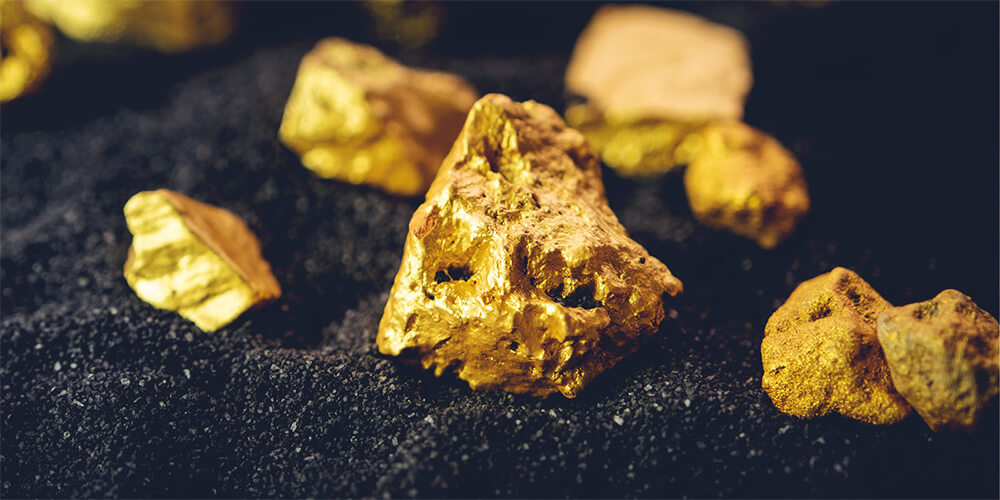
April opened at a price of $1,933.35 per ounce before retreating slightly. However, by the middle of the month, highs of $1,975.25 were recorded again as the continuing uncertainty surrounding the conflict dampened risk sentiment and drove investors towards the perceived safety of bullion.
Although movements back towards the $2,000 barrier were again said to be likely in the short-term, $2,100 was said to be the next big barrier facing gold in the coming months.
Russian sanctions continued throughout April as US President Joe Biden signed an executive order that prevented any transactions from the US with the Russian central bank’s gold reserves. This move was said to be valued at roughly $130bn and was designed to restrict Russia from trading gold reserves on the international market for other currencies or commodities. The Russian rouble had been devalued by as much as 40% since the Ukraine invasion began, a trend which was set to continue.
News also came in April that The Royal Mint was set to expand into the jewellery sector, with the upcoming launch of 886 by The Royal Mint, a unisex jewellery collection crafted from responsibly sourced precious metals. Most notable, perhaps, was the news that the jewellery would predominately be created using gold recovered from discarded electronic waste. In a partnership with Canadian technology firm Excir, The Royal Mint plans to use the firm’s pioneering technology to extract and recover gold from discarded laptops, mobile phones and other electronics.
May
May opened with a gold price of $1,857.90 and although the price steadily increased during the first week of trading, the price struggled to find a footing above a high of $1,895.20. By the beginning of the third week of May, the price had dropped to $1,805.80 – a decrease of 2.8% since the start of the month. This decline was said to be due to a consistently stronger US dollar following a significant sell-off in previous weeks.

Similar decreases were seen across many precious metals, including platinum, which fell to $938 during AM trading on May 16. This was the lowest price seen that month and a notable decrease from a high of $992 seen during the first week. The platinum price was said to be affected by disappointing manufacturing and sales data, particularly from the automotive industry and especially in China, where recent lockdowns contributed to an ongoing dampened demand.
The increased focus on USD during May was initially in anticipation that the US Federal Reserve was planning to adopt a higher interest rate regime for the remainder of 2022, and perhaps even throughout 2023. This move by the central bank aimed to curb the rate of inflation in the US, where recent analysis suggested that it was growing at the fastest pace in more than four decades. A similar situation continued to unfold in the UK, where increases were set to around seven percent by May, which was said to be the highest in over three decades.
As a result, rates were raised by half a percentage point by the US Central Bank, the largest increase since 2000. Similar efforts were seen at the Bank of England, where the interest rate was increased by 0.25 percentage points to a 13-year high of one percent at the start of May.
The Bank of England suggested that, although the measure for the annual rise in living costs could breach 10% later this year, it was likely to fall back to their two percent target within three years, as the shock of both Covid and the war in Ukraine gradually fades.
Volatility continued in the cryptocurrency markets, where, although initial boosts in the price of Bitcoin were seen following the US interest rate hikes, the price went on to decrease by nearly 27% by the middle of May.
The Royal Mint launched the Three Graces Bullion Bar Range in May, celebrating William Wyon RA’s masterpiece. His design was reimagined in a contemporary design by The Royal Mint product designer Dan Thorne.
June
June opened with a gold price of $1,829.70 and prices steadily increased throughout the first half of the month as they met, and occasionally broke, the $1,850 barrier. The platinum price also saw a reasonable amount of activity in the first few days of June, from a low of $975 on June 1 to a high of $1,031 less than a week later.
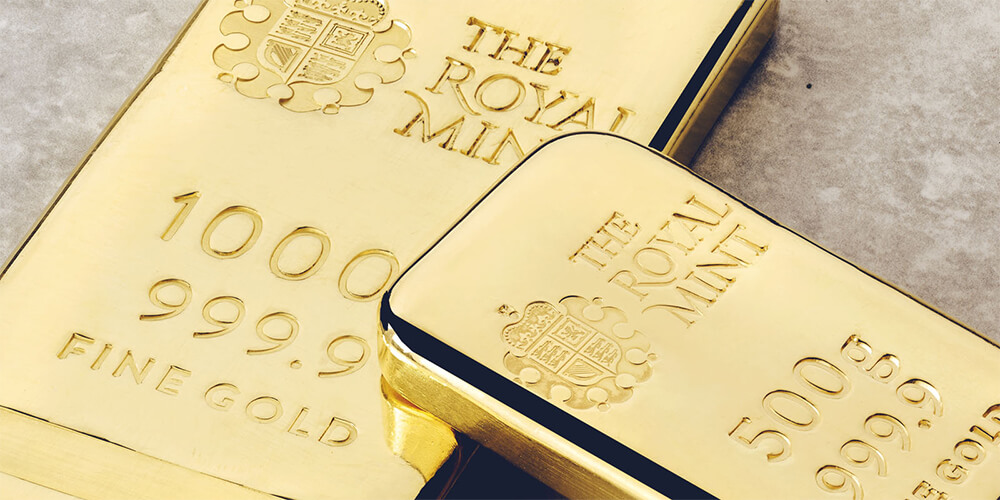
By the beginning of the third week, however, prices for both gold and other precious metals suffered sharp declines as the dollar began to strengthen and seek further support, as ongoing discussions regarding a sharp interest rate hike by the US Federal Reserve eroded the appeal of bullion and precious metals. Gold suffered losses of around two percent, whilst platinum saw seven percent declines with the dollar index hitting a multi-decade peak, as investors steered away from gold as rising interest rates reduced the appeal of non-interest yielding bullion.
The US Labor Department reported that the annual inflation rate in the US rose to 8.6% in May, after initially easing in April. Inflation in the US was said to be at the highest rate for more than 40 years, much of which was prompted by an unexpectedly strong economic rebound following the shock of the pandemic that exhausted supplies prompting companies to raise prices as a result.
News of the rises caused shockwaves through the financial markets. By the mid-month, the S&P 500 benchmark was trading 21.8% below its January peak, whilst tech stocks, such as the Nasdaq, fell by 4.6%. Cryptocurrency markets didn’t escape the declines either, as Bitcoin suffered another devastating sell-off, sending the price down another 12%.
In celebration of Her Late Majesty Queen Elizabeth II’s upcoming Platinum Jubilee, The Royal Mint produced our largest-ever coin – a unique, 15kg gold masterpiece commissioned by a private UK collector. The coin, with a diameter of 220mm, was made of fine gold and handcrafted to the highest standards, featuring special-edition, commemorative designs on both the obverse and reverse, which had been personally approved by Her Late Majesty. With a face value of £15,000, the coin required almost 400 hours of craftsmanship and refinement, coupled with state-of-the-art engraving and laser technology.
July
Although the gold price had comfortably sat above the $1,800 mark throughout much of June, even breaking the $1,850 barrier on a number of occasions, July opened with a price of just $1,795.65.

Similarly, July began with the news that silver had now dropped below $20 per ounce for the first time in two years, hitting the lowest price since July 2020 as a result. Silver remained under increasing pressure, partly as a result of the wider economic and geopolitical turmoil currently faced by markets and economies across the world.
Despite the news that the US Fed had raised interest rates by three quarters of a percentage point, the sharpest hike since 1994, the gold price was only marginally affected by the decision, as spot gold traded down ahead of the announcement and rose shortly after. Following the US increase, Federal Reserve chair Jerome Powell hinted that there could be another increase soon, as the US sought to combat the fiercest surge in inflation in four decades. With a similar outlook in many economies throughout the world, multiple banks followed suit as interest rate hikes took place.
Gold was the latest target of the next round of ongoing economic sanctions imposed on Russia by western countries as the UK, Canada, Japan and the USA led G7 nations with bans on the import of Russian-produced gold. Alongside energy, gold was the largest export by the region and these ‘tough new measures’ were designed to target the over £12bn of Russian gold exports annually.
As the price of a Bitcoin continued to struggle to hit or exceed its new $20,000 baseline, market commentators’ opinions are split as to whether the ‘cryptowinter’ was nearing the end or if the bull market has ended, never to return. Market analysts at Goldman Sachs recently reported that they believe the crypto market has been moving in tandem with the US stock market and has therefore been affected by the macro-economic environment. As such, they predicted there were prospects of a 30% rally for Bitcoin by the end of 2022.
August
August saw an average gold price of $1,765.64, even hitting a high of $1,793.50 at one point. As July had seen a low of $1,686.55 by the third week, the price appeared to slowly recover and seemed buoyed by news of interest rates, inflation, the Russian-Ukrainian war and tension between China and the USA.
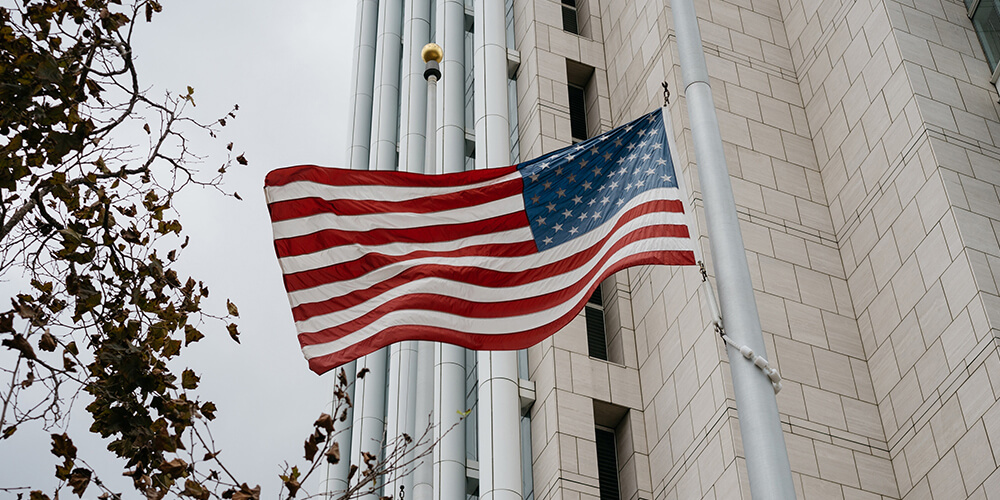
Following the widely anticipated news that another interest rate was on the cards in the US, the Federal Reserve announced its most recent monetary policy move at the end of July by increasing the base interest rate by 75 basis points (0.75%). This was the second increase since June as the country continued to battle a 41-year high inflation rate of 9.1%.
In line with recent announcements of interest rate increases, the word which many were shying away from using was ‘recession’, as leaders of economies sought to discourage negative sentiment. In the US, although GDP had decreased, Federal Reserve Chair Jerome Powell commented that he did not think the US was in a recession at that point. In the UK, however, Bank of England Governor Andrew Bailey warned that the UK would fall into a recession later this year. The UK economy was forecast to shrink during the last three months of this year and was forecast to keep reducing until the end of 2023. Bailey acknowledged that he knew the cost of living squeeze was difficult, but that if the Bank didn't raise interest rates, it would get ‘even worse’.
The Royal Mint announced the launch of a new 20g gold minted bullion bar celebrating and engraved with an image of Ganesh, the Hindu god of luck and new beginnings. The bar was released ahead of Ganesh Chaturthi, a Hindu festival celebrating the arrival of Lord Ganesh to earth, and was packaged in a henna-patterned gift sleeve.
September
The gold price was buoyant throughout September, ranging from a low of $1,618.20 to a high of $1,727.05 and closing at $1,671.75. The gold price activity was coupled with prospects that major central banks were continuing their trend of raising interest rates in an attempt to bring down the spiralling rates of inflation throughout key international markets.
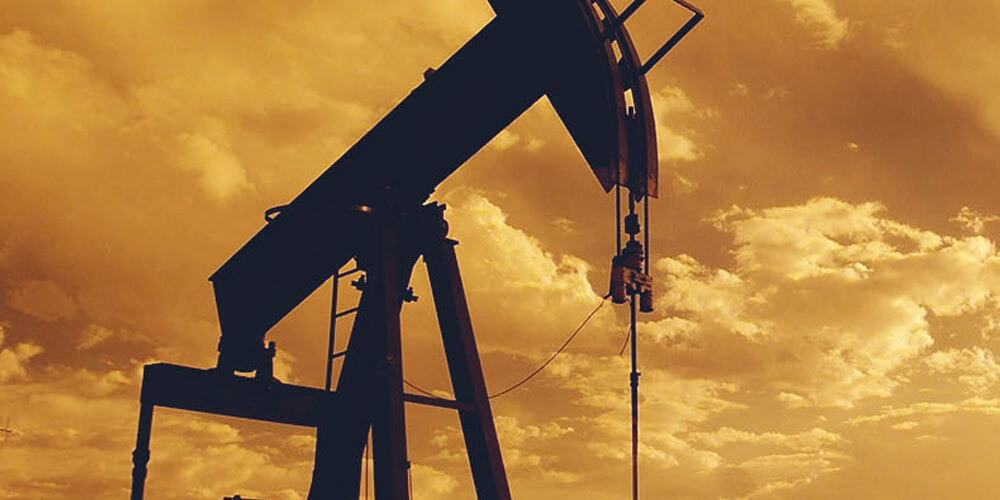
The price of silver did not escape the downward trajectory seen in other metals as silver opened the month at $17.77 per troy ounce – a low not seen for more than two years. Some industry commentators suggested that the resurgence in the silver price is yet to be seen as, with a wide range of industrial uses, demand in key manufacturing and jewellery industries is still lacking behind.
In a report of the largest gold producers in the world, it was suggested that Newmont, based in the USA, held the top spot for the largest producer of gold in the world. Newmont, which has operations in Africa, Australia, South America and the US, reportedly produced more than 2,758 kilo troy ounces (koz) of gold in the first half of 2022. The second and third spots on the list were held by Canadian companies, whilst the other spots in the top 10 were held by South African, Australian and UK companies.
Although it is notable that producers from Russia did not make the top 10, this was most likely because, since the Ukrainian invasion, companies from the region have stopped reporting results.
September 8 brought the momentous news of the death of Queen Elizabeth II. The world was united in mourning, with statements, tributes, comments and stories about her incredible legacy being shared across the world. Anne Jessopp, Chief Executive Officer at The Royal Mint, said:
“On behalf of everyone at The Royal Mint, I would like to extend our heartfelt sympathy to The Royal Family at this extraordinarily sad time. Queen Elizabeth II ruled with heart and devotion, and will be dearly missed by all of us at The Royal Mint and by millions of people around the world.
“The Royal Mint worked with Her Late Majesty throughout her reign – detailing her journey from new Queen to respected head of state across five coin portraits and ensuring each new UK coin received her personal seal of approval. The remarkable legacy of Britain’s longest-serving monarch will live on for many years to come.”
October
The gold price was off to a strong start in the first few days of the month, breaking through the $1,700 barrier and even hitting $1,716 by the end of the first week. This increase was boosted in part by lower US Treasury yields, which offset pressure on the Fed to increase borrowing rates. However, following the announcement of the latest US jobs data, which reported stronger than expected results, this initial boost was not to continue. The positive US jobs outlook reinforced suggestions that the labour market remained resilient and further increased expectations that the Federal Reserve would implement steep interest rate hikes in the upcoming early November meeting. By the end of October, the gold price had dropped to just $1,639 per ounce.

Both silver and platinum prices performed well in the initial days of October, with silver climbing to a high of $20.92 on October 4 before retreating to a low of $19.39 by October 11. The steep rise between October 3-4 of nearly eight percent represented the highest daily percentage increase in silver since February 2021. However, the silver price rally was not to continue, and by mid-month, initial ground gained was again lost for much the same reason as gold. Additionally, as approximately 60% of silver has industrial uses, ongoing recession fears also affected the price of the metal. Similarly, around two-thirds of platinum has industrial uses, so price and demand is closely linked to wider economic activity.
In October, we announced the release of our Britannia 2023 Bullion Coin Range, featuring Queen Elizabeth II’s fifth and final effigy. Britannia has redefined security in the bullion market, leading the way as the most visually secure bullion coin in the world. Philip Nathan’s award-winning Britannia design of 1987 has four advanced security features, which are available on all fine gold editions of the 2023 coin.
We also launched our King Arthur 2023 Bullion Coin Range, featuring David Lawrence’s design depicting the legendary king sitting on his horse and holding Excalibur.
November
It was a positive month for gold as the price rose from a low of $1,652.55 at the start of the month to a high of $1803.15 at the end. This impressive 9.11% increase was in part said to be due to comments from a senior US Federal Reserve official, who raised hopes that the Fed would take a less aggressive approach in raising interest rates amount other factors.

Silver also saw similar increases, rising from $20 per troy ounce on the first to $21.56 by the month end – an increase of nearly 7.8%. Some of the silver price increases were attributed to early speculation that China was potentially looking to end or relax its zero-Covid policy. A change like this was said to prove a boost for silver as, due to the multitude of manufacturing uses, any detraction from the current ongoing restrictions in the region would prove beneficial to manufacturers and the wider economy.
Due in part to significant recent gold purchases by China, some experts speculated that China and Russia were working together to develop and launch a new gold-backed currency, which could aim to challenge the dollar as the primary reserve currency of the world. In July alone, it was suggested that China may have purchased more than 80 tonnes of gold, valued at more than $4.6bn. Whilst neither country has officially confirmed plans for such a currency, earlier this year, whilst Russia was forced away from the dollar due to sanctions, China began ramping up purchases of gold.
The Gold Demand Trends report for Q3 2022, released by the World Gold Council, highlighted that although the LBMA gold price fell by eight percent during the third quarter of the year, the average price in Q3 was only three percent lower when compared year-on-year. This decline was said to be largely in response to the increased strength of the US dollar, as the Federal Reserve raised interest rates to combat high inflation.
Although demand for investment gold was reportedly 47% lower year-on-year, jewellery consumption reached a robust 523 tonnes, an increase of 10% compared to the previous year, despite the ongoing negative economic outlook. Much of the global recovery in jewellery was generated by urban consumers in India as a result of a return to pre-pandemic levels of economic activity. Although demand was increased in these urban areas, rural consumers were noted to be more cautious as their inflation was outpaced by counterparts in more developed areas.
Additional growth was also seen in China, where consumer demand for jewellery saw a five percent annual increase following an easing of Covid lockdown restrictions in some areas. Retail investors were also said to be attracted to the safe-haven appeal of gold amid a depreciating local currency and a decline in local equity prices.
Towards the end of October, The Royal Mint announced that we had started production of circulating coins featuring the portrait of His Majesty King Charles III. The first coin to appear in the public’s change – from December – would be a memorial 50 pence coin commemorating the life and legacy of Her Late Majesty Queen Elizabeth II and representing the biggest change to UK coinage since decimalisation.
December
December opened with a gold price of $1,779.60, which continued a steady positive trajectory in the opening weeks. The price even broke the crucial $1,800 barrier on December 1 and 2, before settling back slightly. The gold price had failed to break this crucial level since July and markets were said to be back under pressure. This was due to stronger than expected US data, which boosted the dollar and ramped up uncertainty over the ongoing strength in the US economy. In the coming days, we are likely to see more activity in the markets as the latest US consumer price data is yet to be released and the last meeting of the Federal Reserve for 2022 is yet to take place.

Looking back on 2022 as a whole, we have seen a market heavily influenced by a number of key developments. From the war in Ukraine to the threat of the cost of living crisis hitting markets and consumers across the world, 2022 has witnessed a number of surprising developments, and the market has reacted as a result.
Throughout the year we have seen the gold price range from a high of $2,039.05 in March to a low of $1,618.20 in September. Although we have since recovered from this low, the fluctuations represent a range of 26%. Silver has seen even bigger movements, with a high of $26.17 and a low of just $17.77 in September – a range of more than 47% in less than a year.
Although it is impossible to predict what 2023 holds, we do know that there are a number of standard factors which have historically affected the price and are likely to have an impact in the coming year. As well as the strength of the US dollar, markets continue to battle with the effects of interest rates and inflation. The ongoing geopolitical concerns – not just in Ukraine but across the world – may have a significant impact in the months ahead.
The Precious Metals team at The Royal Mint would like to wish all of our customers a very merry Christmas and a happy, healthy and prosperous new year.




